Overindulging on Broad-tailed Hummingbirds
I just couldn't get enough of these birds....
....and I also couldn't choose a favorite among these shots. Perhaps you can!
I went to Beatty's Guest Ranch in Miller Canyon with a friend recently. The combination of the recent rains, the beginning of migration season and the influx of this year's young birds resulted in a large number of hummingbirds at this spot in the Huachuca Mountains. Male Broad-tailed Hummingbirds seemed to prefer one feeder where there were a good number of perch spots in the open!!
Male Broad-tailed Hummingbirds have what AllAboutBirds describes as a "rose-magenta" gorget. The throat feathers on these hummingbirds do not have a colored pigment but they are structured in a complex way that breaks apart the sunlight. At the right angles, the feathers reflect and refract light into iridescent colors.
Today's post features the gorget of these male Broad-tailed Hummingbirds over and over again on different perches. In some angles, the gorget remains dark. In others, the vibrant colors are stunning.
To learn more about this species of hummingbirds, read the nice post from Tucson Bird Alliance.
These hummingbirds weigh a bit more than a penny and a bit less than a nickel. They are less than 3.5 inches from bill to tail.
While we were at Beatty's for well over two hours , I must have spent at least a half hour with all of my attention on the Broad-tailed Hummingbirds.
Broad-tailed Hummingbirds are common in southeastern Arizona during the summers. They are found above 5000' elevation in mountain canyons and meadows. The range map shows how they are a summer species throughout the Southwest. The spotty range is due to their presence in mountains and not at lower elevations. (Beatty's Guest Ranch is at 5,800 feet of elevation.)
While the photos all show the Broad-tailed Hummingbird at rest, it never remained on one perch for long. While it was flying around, its sound was ever present. The unique trill is caused by its wing feathers. You can find these birds by their sound.
As little and as pretty as these birds are, Broad-tails are aggressive like many other hummingbird species. They spend much time protecting "their" food/nectar sources from other hummingbirds.
They were constantly on the look-out for other hummingbirds and would chase after them before returning to the same or nearby perch spots.
Hummingbirds' small size, aerial ability, and vibrant colors make them very attractive to people. Their ability to hover, fly backwards and their territorial fights make them captivating to watch. We are lucky to have so many hummingbird species in southern Arizona.


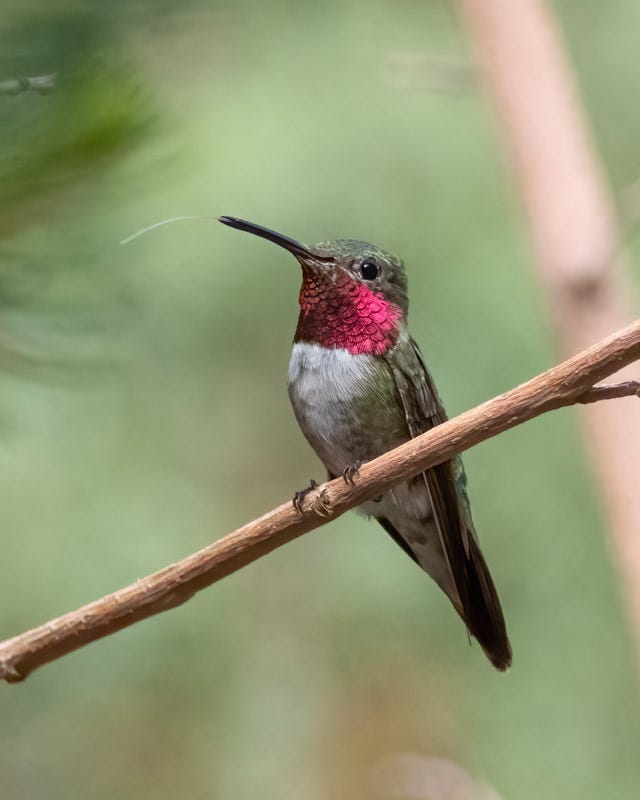
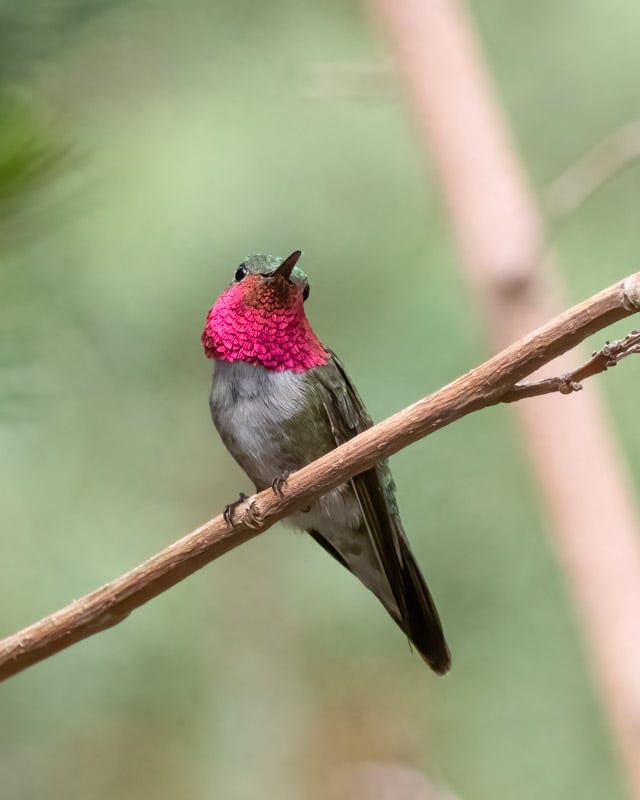
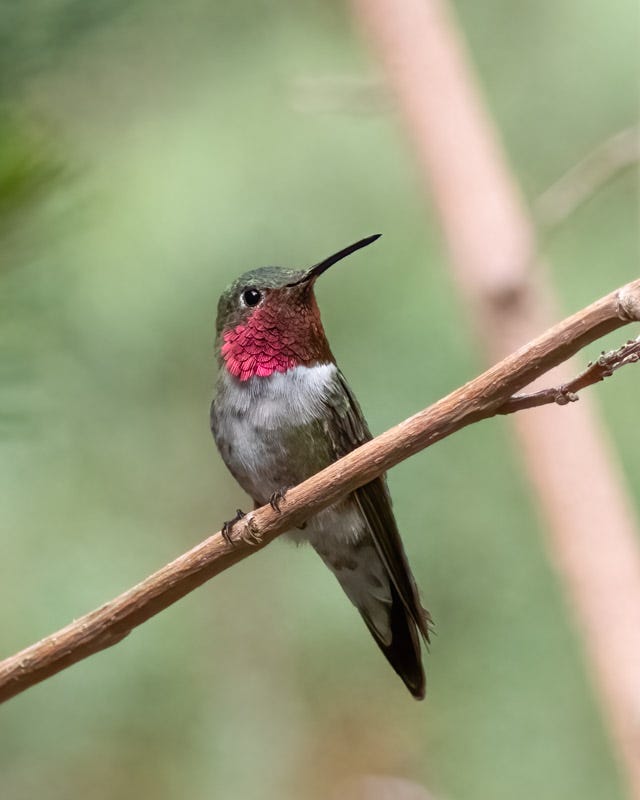
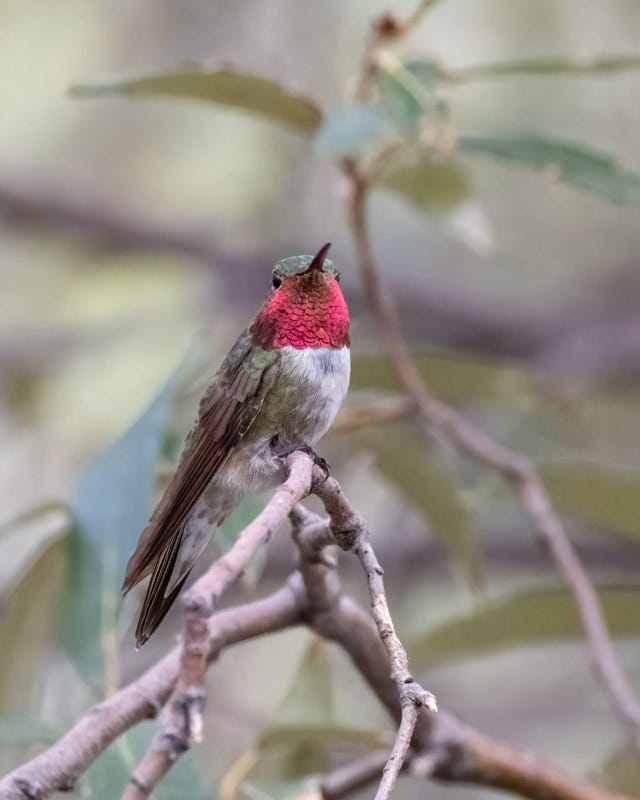
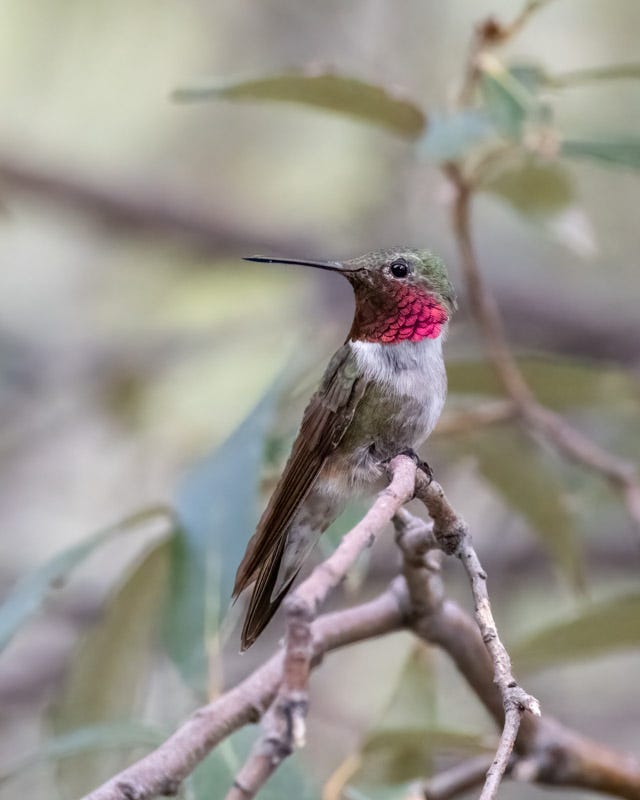
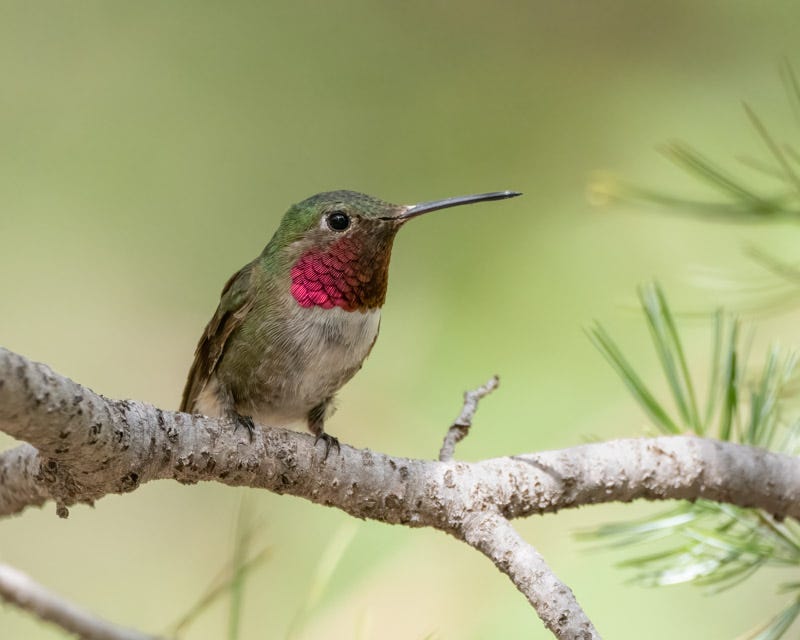
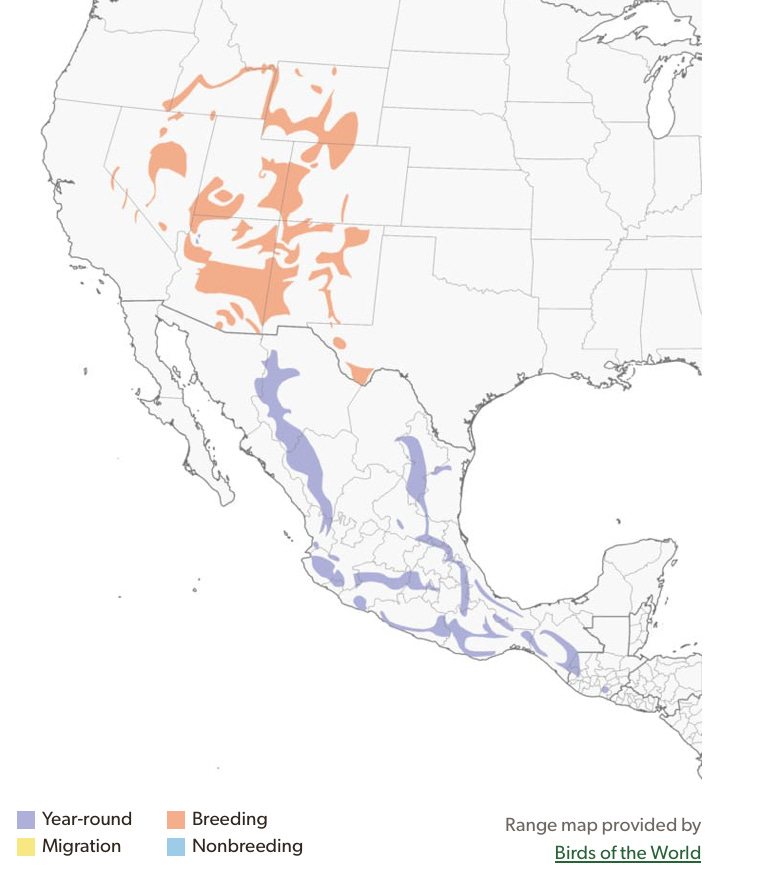
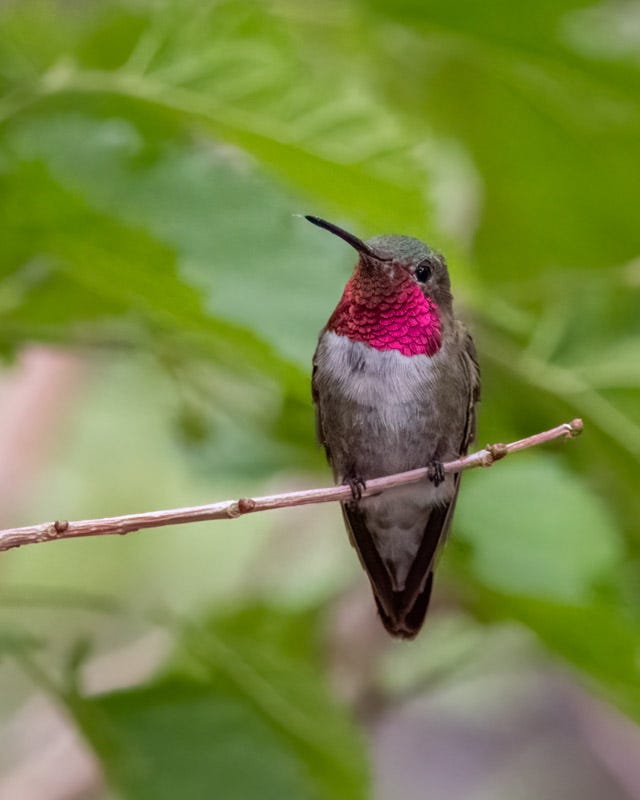
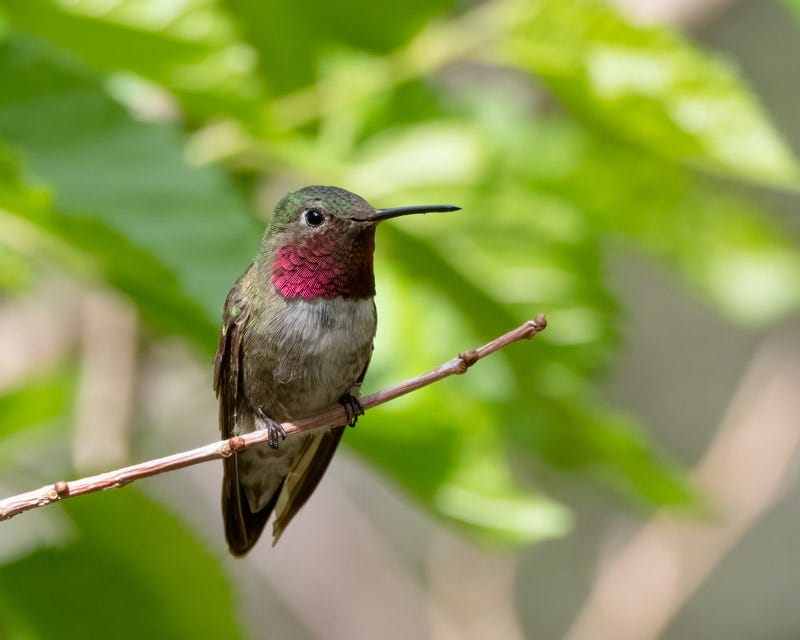
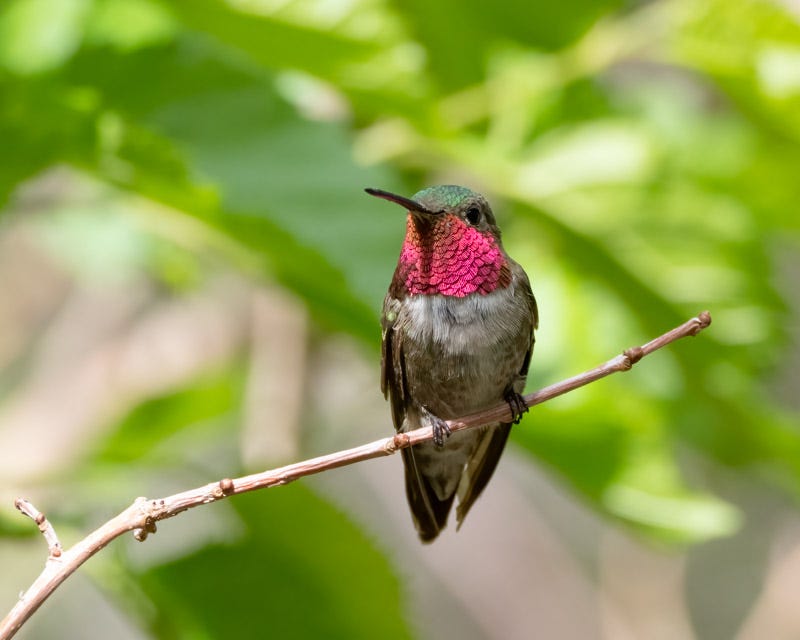
Fabulous! Gorgeous!
I vote for the last shot